Who was still buying lowest-trim “stripper” full-size two-door sedans in the ever-more affluent 1960s? There were a few who ordered a Biscayne like this with the 425 hp solid lifter 409 V8 and a four speed stick because it was so light, hence fast. There were some police and highway patrol departments. Undoubtedly some very thrifty folks who weren’t going to downsize into a compact. But the most stereotypical one was the traveling salesman, whose employer supplied him with just the basics: a low-end two door sedan with a big trunk.
Now if his employer wanted him to minimize time spent driving, they would have ordered a Chevy Biscayne like this one with the new perkier-for-’63 283 V8 instead of the six. It scooted right along. The return on investment of the additional $107 was surely well worth it, even if it just improved the salesman’s mood and self-confidence.
After only six years, the 283 (4.7 L) V8 was already referred to as “that old standby”. But for 1963, the basic two-barrel version was given a bit of a refreshing, in the form of heads from the base 327 with bigger ports as well as a perkier camshaft. The result was a genuine 15 hp bump, from 170 gross/135 net hp to 195 gross/150 net hp and a 10 lb.ft. bump in maximum torque. The compression ratio also went up from 8.5:1 to 9.25:1, although it still ran fine on regular gas.
This 195 hp version would be built by the millions in the coming years until it was superseded by the larger (although barely more potent) 307 in 1968. As car weights and accessory equipment demands increased, the 283 would increasingly struggle to live up to its original reputation as a lively engine, but with this bump in power in a quite light car (3460lbs), it could still live up to its rep with a 0-60 time of 10.7 seconds. That may not sound all that impressive, but back then 10 seconds defined a “quick” car.
As a rather painful point of comparison, In 1964 CL tested a Ford Custom sedan with the 195 hp 289 V8 and 3-speed Cruise-O-Matic, and its 0-60 time was a very soggy 15.2 seconds. That’s just a tick faster than the ’66 Bel Air with the 250 six and Powerglide, in a review we posted here.
Admittedly this Biscayne had the three-speed manual transmission, but I’ve come to realize that may not have been much of an advantage as numerous vintage reviews have shown that PG equipped cars were often just as quick as manuals in the 0-60 since they had greater torque multiplication at the start as well as not needing to make a shift with a typically balky column shifter. As a frame of reference, a heavier 1965 Impala with this same 283 and PG took 12.4 seconds.
This was despite the standard rear axle ratio having been lowered (numerically) from 3.36:1 in 1962 to 3.08:1 for 1963. The result of course was lower engine speeds when cruising, only some 2500 rpm at 60mph. Noise went down and fuel economy improved, to 17 mpg overall and a maximum recorded 19 mpg. That’s decidedly better than average for a lively V8 full size car of the era.
The other benefit was that second gear now was more versatile as a passing gear, usable up to a maximum speed of 72 mph at 5000 rpm. Its top speed of 105 mph would have been higher though with a higher numerical rear axle ratio, but traveling salesmen undoubtedly appreciated the reduced engine speed and noise as well as the improved economy. The little two-barrel carb and single exhaust restricted the inherent potential of the 283 at higher speeds, resulting in an acceleration curve that was brisk up to 85 mph but then really flattened out. CL pointed out that this gear ratio was “ideal for economy…not for the performance-minded”. With the right rear axle ratio, this Biscayne could likely have gotten into the nines for the 0-60 run, and improved its 17.9 second 1/4 mile time @76 mph.
Speaking of weight (3460 lbs), CL was surprised to see that the ’63 had shed some 60 lbs from the ’62 model, thanks in part to a new aluminum-cased alternator. As a point of comparison, that ’64 Ford Custom they tested the following year had a curb weight of 3805 lbs. Fords of this era (1960-1964) were always heavier, thanks to Ford having gone overboard on the 1960 in terms of size and resulting weight. The considerably slimmer all-new ’65 Ford got its weight back in line, shedding some 300 lbs.
CL summed it up: “Obviously it is cheap, economical and has considerable spunk. It is ideal for the traveling salesman and thousands have been sold for just that purpose”. Maybe more like “hundreds of thousands”?
CL relates that its own Midwest sales manager bought a similar ’62 model the previous year and was very happy with it, having put on 22,000 trouble free miles except for one rattle. He traded in a compact for it, and was happier in the big Chevy. He probably wasn’t the only one who did that.
As I documented in “Who Killed The Big American Car?“, after years of declining market shares since 1955, big cars enjoyed a brief upturn in 1963 and 1964. It does make me wonder how many of them also were bought with a compact traded in, by owners who just weren’t quite satisfied with a smaller car. We can be pretty sure they were all men though.
I was curious to know what percentage of full-size ’63 Chevrolets were Biscaynes: 13%. Bel Airs accounted for 26% and Impalas for 61%.
And how had it been a decade earlier? The base 150 accounted for 14%, the mid-level 210 for 48% and the top Bel Air for 38% in 1953. The trend was clear: folks who used to by the mid-level trim were moving up to the top in ever greater numbers.
Moving forward in time, the last Biscayne 2-door would be in 1969, the last Biscayne 4-door in 1972, the last Bel Air six in 1973 and the last Bel Air V8 in 1975 (in Canada the Bel Air soldiered on for some years yet).
But in 1963, the el-cheapo Biscayne buyers were still holding their own, undoubtedly due to heavy fleet use like this highway patrol car that has a 327 V8 and most likely a three speed manual. And thanks to its police package, it’s sporting big 15″ wheels and tires as well as heavy duty suspension and metallic brake linings that turned the marshmallow Biscayne into a very capable high speed cruiser (and stopper). Our traveling salesman might be well advised to not try to outrun this highway patrol car even if his one of his paramours was eagerly waiting for him at a motel.
The Biscayne lived up to the usual quite high Chevrolet standards of fit and finish back then. The paint job was the best CL had seen in this price class, although not exactly quite perfect either. As to its mechanical components, Chevrolet’s rep for reliability had been earned. And a heater was standard, along with the alternator, PCV and self-adjusting brakes. What more could a traveling salesman ask for, in 1963? A Bel Air, perhaps?
And what did this Biscayne cost? $2,429 as tested, which adjusts to…exactly ten times that in 2023 dollars: $24,289, or about the price of a new Corolla LE, a good choice for basic transport in 2025.
The interior was described as “serviceable but a little plain“. Well yes, that’s what makes it a Biscayne and not an Impala. 1963 would be the last year for a rubber floor covering, but it’s impossible to find a picture of one on the web that hasn’t had carpets installed, which did became standard in 1964. That reminds me, I had a friend in grade school with whom I rode to orchestra practice. His dad, a married grad student, used to drive a 1958 or 1959 Rambler American but one day showed up in a brand new ’64 Biscayne 4-door, with the six and three-on-the-tree. Its back seat felt so much bigger than the snug American, and I remember its patterned upholstery, carpeting(!) and lack of rear door armrests all-too well.
Of course the Biscayne was far from perfect. A major complaint was the noisy three-speed transmission that “wails like a dyspeptic banshee“, apparently due to a design flaw that placed the first gear set too far away from bearings, allowing the shaft to separate some, resulting in lack of complete mesh and resulting noises. The solution was to fork over $199.10 for the Powerglide. The excellent Borg-Warner T-10 four speed wasn’t available with the 283; that required a 327 or 409.
Another complaint was the driving position. The seat’s relationship to the pedals and steering wheel were less than ideal. The steering wheel was too close and too high, and the seat too low; a common complaint about these cars.
As to the Chevy’s ride and handling, it was predictably too soft and the manual steering too slow, with 5.8 turns lock-to-lock. Heavy duty springs and shocks easily cured the first issue.
The unassisted drum brakes turned out be “quite good”. Two “all-on” stops from 85 mph did not result in the typical fade or pulling. The brakes had a new self-adjusting feature that also increased their self-energizing function, making power assist even less necessary. Or desirable: my own experiences with power drum brakes inherently resulted in gross over-braking at low speeds, with a very touchy pedal.
CL ends with this advice, despite the many positive qualities of the Biscayne:
Try the seating/driving position before you sign the papers.
Related CC reading.
Curbside Classic: 1963 Chevrolet Impala SS 409 – Giddyup, Giddyup 409 by PN
Curbside Classic: 1964 Chevrolet Bel Air Wagon – Love Transcends All by PN
Curbside Classic: 1964 Chevrolet Biscayne Taxi – Experiencing Down Time by J.Shafer
Vintage Car Life Road Test: 1966 Chevrolet Bel Air Six With Powerglide – Just How Slow Was It? by PN
Automotive History: An X-Ray Look At GM’s X-Frame (1957-1970) – Xing Out Some Myths by PN
Automotive History: Who Killed the Big American Car? by PN





















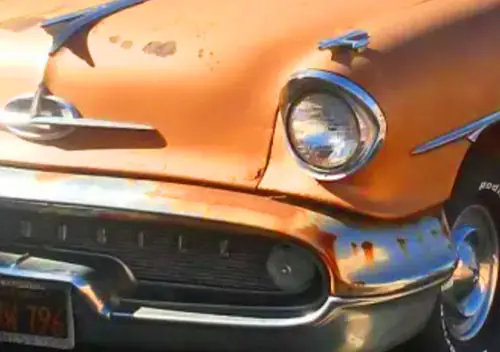
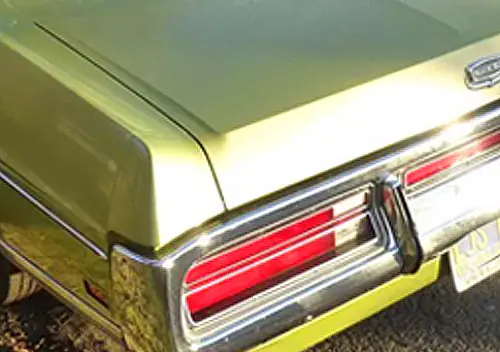
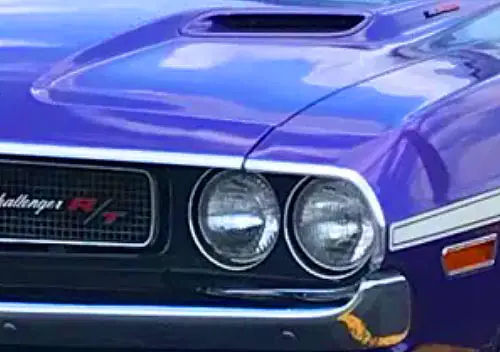

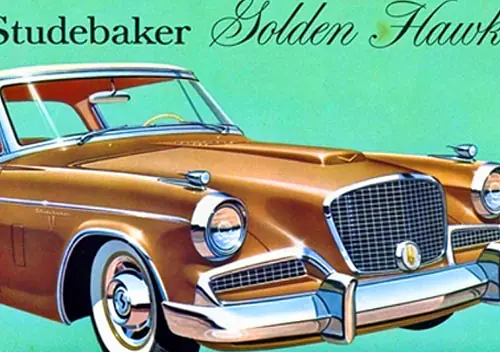
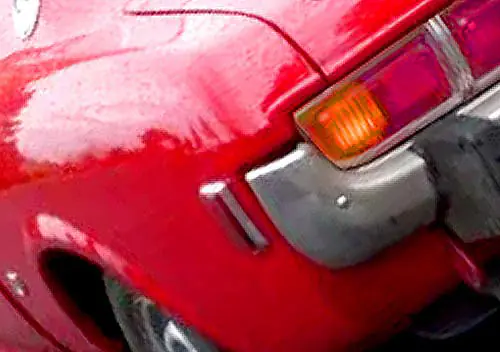
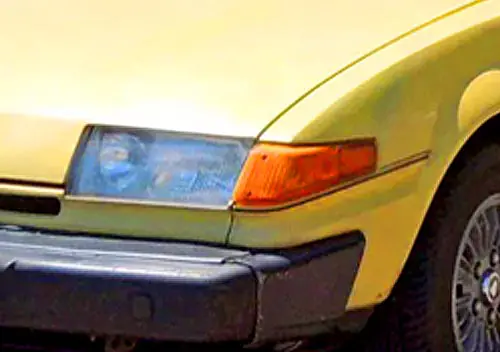
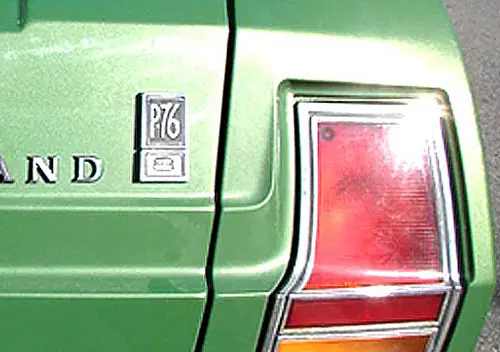
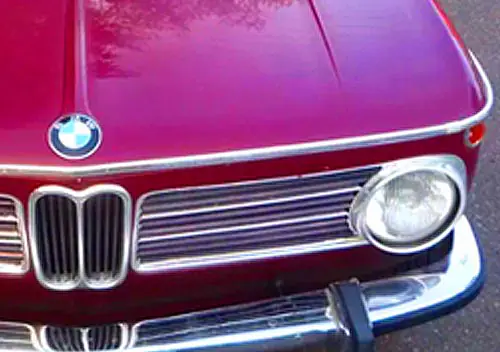
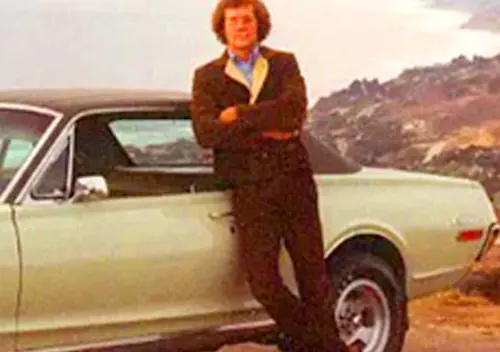
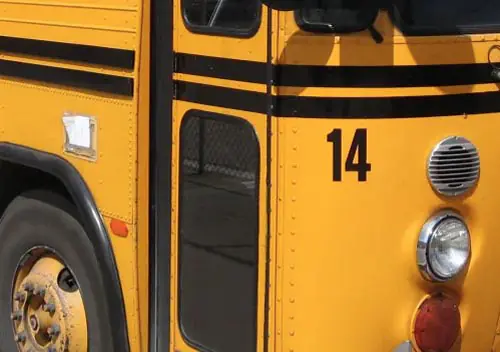
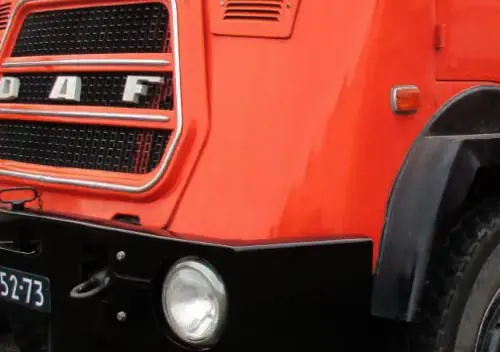
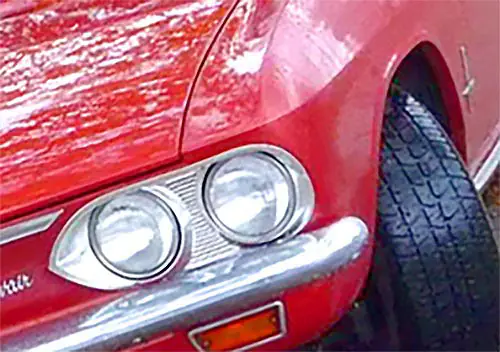
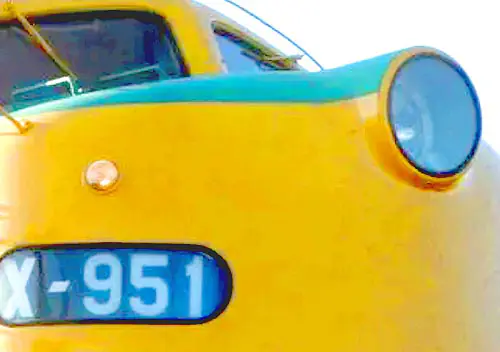
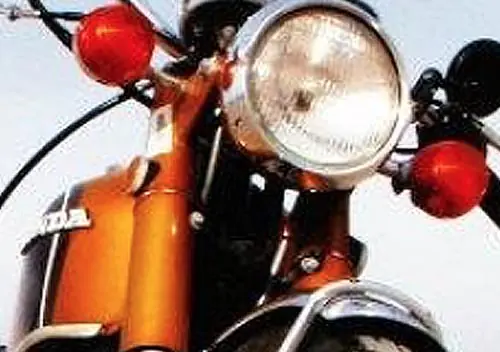
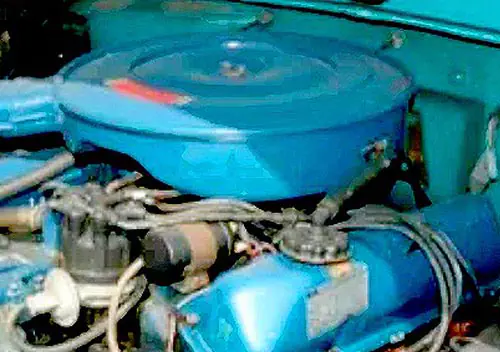
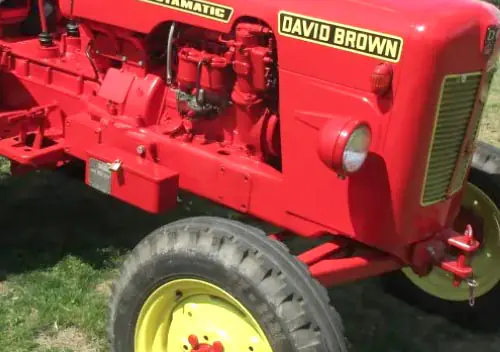


Our neighbor across the street was a chronic stripper buyer, (!) as he wanted a cheap driver to go into his law office in Baltimore, so he had a series of them. The ones I recall are: ’59 Biscayne 2 dr, ’63 Biscayne 2 dr, ’67 Biscayne 2 dr. All were 6 cyl 3 spd on column, radio & heater, that’s it. He must have gone into Marsden Chevrolet ever3 or 4 years and said “give me the usual!”. His wife, however, always had a Cadillac Sedan de Ville that he kept in mint condition, the ones I remember were a ’59 and ’64. We moved away at that point. They were an interesting childless couple with diametrically opposed cars always in their driveway.
PS Mrs. Hahn didn’t work, but several times a week she drove her baby blue Caddy over to Pickersgill retirement home, just a block away, to play the piano for the seniors there. I’m sure they enjoyed it greatly as she was a very good pianist, almost professional level. Sometimes she played for me and my sisters on her home Baldwin which even had a candelabra on top, just like Liberace’s! Her car didn’t have them.. but his did!
In the small town I grew up in, there was a solid early 1980’s renaissance of classic 1960’s strippers. Young people, and young families, living outside of town, needed transportation. And as frugal local farmers were passing away, these were the cars they were acquiring. Once again, pressed into daily driver service, after over a decade of sitting peacefully on a remote farm. Unfortunately, many of them didn’t last long. Perhaps two or three seasons, of being driven regularly in frigid weather, with heavy road salt application. It was neat for a brief moment in time, to see these bare bones Falcons, Beaumonts, Acadians, and Valiants. Driven by early twenty-somethings, with baby seats in the back. Parked with Fairmonts, Citations, and Horizons, at the library, doctor’s office, or grocery store. Great memories. Many of us smug teens, thought they were borderline s-boxes. But they performed admirably, in their final roles.
The mileage figures – between 16 and 19 mpg, with an average of 17 – are strikingly similar to what I got with the 1962 Nova I had in the early Eighties. Inherited from a widowed aunt, it only had 50,000 miles on it and was no beater: it never used a drop of oil between changes. But gas mileage with the Turbo-Thrift six and Powerglide was disappointing. I wouldn’t blame a traveling salesman for trading on a larger, faster Biscayne that got the same mileage.
By the way, the phrase “a gear well calculated to keep down expense” was a reference, which readers at the time would have gotten immediately, to the CBS radio show Suspense. Their tagline was “a tale well calculated to keep you in [dramatic pause] suspense.” Just thought I’d mention.
“I was curious to know what percentage of full-size ’63 Chevrolets were Biscaynes: 13%. Bel Airs accounted for 26% and Impalas for 61%.” That explains why growing up I hardly saw any Biscaynes–mostly Impalas and the occasional Bel-Air. It’s weird that when I finally found a surviving ’59 Chevy to buy, it turned out to be a Biscayne!
In my opinion, these cars don’t need power brakes. Power steering is another story. Not only is the manual steering slow and rather “reluctant”, it’s extremely hard to turn the wheel when moving slowly or stopped. The traveling salesman should order PS if he does any driving in the city or in tight spaces.
I’m wondering if 0-60 is really a relevant measure. On most cars considered “slow”, the lag occurs at 50-60, whereas the 0-40 time (where most people accelerate) is within the “normal” range. My ’60 Comet w/ the 144 was considered a “dog”, but around town it had decent pep. 0-60 was around 22 sec. A VW Beetle was even slower 0-60, but that didn’t stop people from wanting to own and drive one.
I guess you’ve seen this magazine ad:
I don’t have ps on my ’66 F100, and sure, it’s a bit of an upper body workout in the parking lot. But the moment it gets rolling just a bit it’s fine. Keep in mind that in many parts of the country folks didn’t spend much time in really crowded parking lots. If you look at most of these vintage Photos of parking lots, they were far from crowded, and the lines marking the spots were generous.
Manual steering was pretty common still, and my mom did ok with it on our ’62 Fairlane.
As to acceleration, well yes, I try not to put too much emphasis on it as for most driving around town it wasn’t so much of an issue. But put the whole family of 5 or 6 in it and fill up the trunk with luggage and maybe a top carrier for more and try passing a big semi on a two lane highway or head up into the Rockies and all of a sudden acceleration ability becomes a very real issue. I vividly remember some quite scary passing maneuvers/attempts in such a scenario in our ’62 Fairlane on vacation trips.
It all depends on your driving patterns and expectations. And obviously it was an issue with buyers or why else would Chevy offer this car with everything from 140 to 425 hp? Something for every accelerative desire.
Only 14.1 percent of ’62 Fairlanes had power steering. The 1963 model year was the last in which the power steering take rate for full-size Chevrolets was under 50 percent: It was 46.9 percent for 1963 and 52.8 percent for 1964.
Good info!
My two data points on these are the 63 Bel Air wagon my father had in probably 1964-65 and the 62 Bel Air 2 door sedan my college roommate had around 1981. Dan’s 62 was a 6/PG, so kind of the opposite of the test car in the powertrain department. Dad’s wagon was a 283/PG.
Gawd, but do I ever remember that driving position. It was clearly a problem if it was mentioned in the road test, and it was not made any better after the seat springs had been given a decade to sag. And the manual steering with 5.8 turns lock to lock (virtually 6 turns, if we are rounding) was just awful to live with. As for Dad’s wagon, I never remember him being eager to drive it when the whole family went somewhere, and when he picked its replacement he picked a 66 Country Squire.
But these were good looking cars with great resale value and a solid powertrain, so it is clear that plenty of people were willing to accept the platform’s inherent shortcomings to get the benefits. But today, you will notice that many who restore these do so with a modern steering gear/steering column, a THM in place of the PG and disc brakes. These things fix most of what was wrong with these cars.
“And the manual steering . . . was just awful to live with.”
LOL:
I had momentarily forgotten that my friend’s 62 had a dealer installed power steering setup on that slow manual system. Proper power steering from the factory still only reduced the ratio to 5 turns lock to lock.
If you wanted an attractive, well-built car with top resale value, buy the Chevy and live with the shortcomings. If you wanted something to really drive, well that’s why they made Plymouths. 🙂
In 1962, a favorite uncle inexplicably traded in his 1958 Cadillac Sixty Special for a 1962 Biscayne wagon, with the only option being an AM radio. Never did find out why and he never volunteered the reason. Also seemed a sore point of discussion for my aunt. He kept the Biscayne until 1970, when it was traded in on a nice 1970 Buick.
A local parish priest had a succession of Biscaynes, always black two doors devoid of any options, not even a radio. Finally, he splurged, buying a 1969 Bel Air. Still a black 2 door with zero options.
My second car after a terrible 1959 Ford was a 1963 Biscayne, 4 door, 6 cylinder, 3 on the tree, and over drive. It got something over 20 mpg which wasn’t too important in 1970 A pretty good car overall.
Part of Pop’s job involved buying fleet cars for a team of traveling salesmen, and he always bought Chevrolets. But he was also image conscious, and felt the Biscayne was the equivalent of showing up to sell a customer while wearing a $10 suit.
In reality, a Bel Air was only $100-200 more than a Biscayne, and you really did get a lot more for your money. Especially when appearance mattered to you.
He tried equipping the Bel Airs with six-cylinders, but the salesmen in the wide-open west were beating them to death by driving them 800+ miles per week at high speeds. Thereafter, all the reps got their cars with a base V-8.
These were so common in our small farming town. So many rather conservative farmers just didn’t want their cars loaded up with stuff they regarded as useless geegaws. By the time I got my driver license in the late ’60s, these earlier models were often used by new high school drivers. I recall most of them as being 6s rather than V8s, but the Chevy 6 was a pretty good engine.
We had a salesman that lived across the street from us. His family car was a Chevy Bel-Air V8, but his company car was a Studebaker 6. I’m sure some salesman bought their own car, but most I knew got a fleet car. Those always seemed to be a base model 6 – though I recall most had an automatic rather than a manual.
Love your essay, Paul! Good analyses! I had a girlfriend who bought a ’63 Bel Air four-door sedan new with power steering, brakes, automatic, and a radio. At 5-feet tall, the steering wheel and seating were so bad for her that she sat on a cushion to drive the car. Comfortable ride, by the way. PCV, positive crankcase ventilation. was mandatory in 1963 along with front outboard seatbelts. Heaters were mandated in 1959. I used to sit in a 1965 Biscayne two-door when I traveled with a coworker who, due to his position in the company, was privileged not to drive a company. As for V8’s in the Midwest, I remember when working at Chrysler in 1974 (Distribution Department, New York Office), there was a shortage of the 318 CID V8. So, availability for the Dart and Valiant was cut off. Once available, Midwest dealers were given priority for their customer-ordered and stock cars for the reason Evan Reisner mentions.
63 Chevys were a popular car if you could get one supply was restricted by govt regulations and tariffs and finance restrictions so only trhe Bel Air was assembled here using Canadian kits and the 283 was the engine no sixes a Chevvy was considered a luxury offering and there were other six cylinder cars from GM on offer.
Nice write-up and a bit surprising that Car Life had enough interest to do a full road test on such a base car. Interesting for us 21st century car nerds, but I’m sure historical perspective wasn’t their priority.
These old magazines go into a lot more technical detail that modern road tests typically do, like the cam profile and how exactly the self-adjusting brakes work.
I noticed your net horsepower figures. Did you calculate those from a formula, or do you have a reference that lists those figures?
The mention of 2500 rpm at 60 mph, even with a “tall” 3.08 rear end really highlights how we’ve gotten used to overdrive gearing in our modern multi-speed automatics. My Tacoma, for example has a 3.91 axle and a direct drive 4th gear, but 6th is 0.58:1. The Tacoma’s RPM at 60 is sub-2000. Of course, at that RPM it can rarely pull 6th gear. It really needs a 283 with modern fuel injection, electronic engine management and variable valve timing.
That very much exists, in the form of the Toyota 4.7 L 2UZ-FE V8! Just swap one in from a Landcruiser, gen4 4Runner, Tundra or Sequoia. Well, technically it’s a 285, but close enough?
In 3/OD, my pickup turns 1900 rpm at 60. But it can handle that even up some modest grades. Lots of low end grunt for a 3.9 L six.
I’d have to move somewhere with less stringent smog regulations, though a same year 2106 5.7 Toyota V8 might be possible ; I haven’t heard of any CARB-legal conversion kits and DIY is probably a wiring harness nightmare. As for the torque of your 300-6m that’s why I was intrigued by that six cylinder Bronco Craigslist ad I shared with you a few days ago. You said it wasn’t your style but I was the one who was attracted by it. In theory 😀
Mine only has the 240 (3.9), but still plenty of grunt. I’ve toyed with the idea of putting a 300 in, but haven’t felt compelled enough to bother. My truck is so light, like 3400 lbs, so the 240 makes pretty easy work of it.
Next time you’re up here we need to go for a ride in it.
When I was a kid my German-American Lutheran grandmother owned a series of stripper Chevrolets. My earliest vague memory is of a ’57 150 (or possibly a 210) 4-door sedan which was replaced by a ’62 Biscayne 2-door sedan in Twilight Turquoise that featured the 283 V-8, 3 on the tree (but with optional overdrive) and an optional pushbutton AM radio. That was it. No other options. This was replaced by a ’67 Biscayne 4-door sedan with the same options, the 283 V-8, 3 on the tree with optional overdrive and a pushbutton AM radio in Bolero Red. She was very thrifty, but felt she needed a full-sized car and she needed a V-8.
Eventually my grandparents started doing better financially in the early 1970s. Grandpa bought a new ’73 GMC pickup with air-conditioning and my grandmother made a point of driving the pickup whenever she got the chance. In 1974, Grandpa bought her a new, pretty-well loaded ’74 Caprice Classic Coupe with air-conditioning to replace the ’67 Biscayne. This was at the height of the gas crisis and the Caprice didn’t get very good gas mileage, but Grandpa got a deal on it. Grandma liked it.
My uncle was an area rep for a large insurance company covering the south half of Arkansas calling on insurance agents. Almost all of his driving involved two lane roads, lots of small towns, slow traffic hard to pass, etc. and he averaged 500 miles per week He got a new company car every three years, 1954 Chevy, 1957 Chevy, 1960 Chevy Bel Air, and 1963 Bel Air. All were 6 cylinder, three speed manual, no A/C. They suited him just fine for the type of driving he did and I cannot recall him ever saying that he was stranded due to mechanical issues. However, 1966 when the company went to some sort of allowance plan and his driving was reduced a good deal he bought himself a 1966 Impala, 283, PG, A/C, etc. and kept it for many years.
It wasn’t just the Bel Air that got a stay of execution in Canada; the Biscayne was also sold there through 1975, three years after it was dropped in the US, and four years after they were offered to consumers (’72 Biscaynes were fleet-only and not mentioned in brochures). As in the US, the first year for Biscaynes in Canada was 1958 – there were no ’57 Biscaynes, despite Joni Mitchell trying to convince us otherwise in “Raised on Robbery”.
The more-upright roofline on the 150 in the ’53 brochure looks odd to me; by the ’70s these “formal” rooflines were usually found on the high-end models, not the low-end.
I’ve never been behind the wheel of a ’61-64 Chevy so can’t comment on the oft-criticized driving position, but it never seems abnormal in photos I’ve seen. In the interior shot here, far from the steering wheel looking too high, it looks like it’s barely high enough to clear your legs.
Indeed, here a picture from the Canadian 1975 Chevrolet full-size brochure. https://oldcarbrochures.org/Canada/GM-Canada/Chevrolet/1975-Chevrolet-Full-Size-Brochure/slides/1975_Chevrolet_Full_Size_Cdn-16-17.html There was no Biscayne for 1976 although some people could create a “Phantom” 1976 Biscayne. 😉
I guess they did some air brushing on this photo to replace Impala or Bel Air nameplate for Biscayne.
I went to high school in Toronto in the mid sixties and I once got a ride home from school with the mother of a classmate and she was driving a 4 door Biscayne with absolutely no options, not even a radio. It was the first time I remember seeing a 3 speed column shift. I remember how basic it seemed, even compared to inexpensive European cars like VWs and Morris Minors. It was probably a pretty reasonable choice for a second car for the family, but it was unusual.
Our “65”, or “68” had a radio antenna. My dad did the “radio”, delete. A face place covered where the radio was removed.
Believe it was about a “$38.00”, credit. Both of ours were automatic.
The interior of the “63”, pictured, is way more “upscale”, looking then our “65”.
(both were 4 doors)
A friend of mine in high school had a 68 Biscayne for a few months, and then started driving a 1970.
Six cylinder, automatic and not much else, I asked where he found these cars. He said that his dad worked for a big dairy company in Columbus Ohio called Meadow Gold (if I am remembering correctly). Anyway, it seemed these were the perfect salesman’s cars and the dairy would sell them off every two or three years. The employees were given the first chance at them before they were auctioned.
I can recall that Chris, my friend, beat the life out of that car and it never failed! I believe he hit two deer which is what finalized its life.
I think if these stripped down full sized sedans were around now, I’d probably own one. I still like my Brougham life, but I’m quickly learning that the extra features don’t stop a vehicle from being good basic transportation
This Biscayne more than likely had black walls when it was new. Many of these base model stripper cars were bought by middle aged and older people who’s frugal ways were shaped by the Great Depression. I used to see Biscaynes and Belairs all the time as a kid in the 60s. Ford Customs not so much.
Lots of cool stories here from back in the day; I have to add my own without too much repetition from what I’ve reported on CC before. (And yes to Chip, we Meadow Gold milk and ice cream in Pittsburgh in the 1950s-60s.)
My parents’ first car was a new 1953 Chevy 210 2-door sedan, and my mom told me Dad felt the mid-price trim was the best buy. Unfortunately, he passed away the next year from leukemia, and my mother had trouble fully depressing the clutch pedal.
She ended up trading in the ’53 for a new ’55 — it’s the first car I can really remember since it was kept until I was 9 years old. She continued with the 2-door sedan in the mid-trim 210 series, although this one had the Delray trim package, so it looked almost as nice as a Bel Air both inside and out — you couldn’t tell it only had the 6-cylinder and (still!) a 3-on-the-tree. Clearly, the issue with the clutch pedal had been resolved.
Unfortunately, she persisted in choosing the same mid-trim level and 2-door sedan body style for the two succeeding Chevys, and they became ever-more stripped in appearance: a 1961 Bel Air and then a ’67, this last with only one option — an AM radio! By then, even Consumer Reports was recommending an Impala.
Photos (not our cars) — 1961 Bel Air (top) — ours was turquoise, no whitewalls or bumper guards
1967 Bel Air (bottom) — same color, zero options other than radio
I lived in / through tha 60s days to early 70s. Hot Rod Era days. I had a good friend in high school had a ’63 biscayne. I had an impala 327/250 hp, great car. Thanks for tha reminiscing time I’ve had.. Randy Crosby
My dad had a new Ember Red 63 Biscayne, “2dr coach” No options, not even a radio. He came out of the Great Depression and he was 4O when he bought it in October 1962. He could have easily bought a Belair or Impala, but he traded them every 3 or 4 years. Before that was a 58 Delray. He did buy one Belair, a 53, the first new car he had. After that, back to the Chevy strippers again.
I well remember the two door 1963 Biscayne I bought in the early 1980’s from some kid who’d failed in California and only needed $130 for his train ticket back home .
I dropped him off at the train station .
It was a pretty good car, not worn out, no rattles / squeaks, it had the base 230 CID i6 engine and three speed, someone had fitted a B W T10 floor shifter and of course the shift pattern was reversed, no big deal .
After a few months of playing with it I yanked the engine and towed the *perfect* body to dump it .
-Nate
Something I always wondered about….. How could it have been cost effective to have a separate stamping to make two taillights on each side instead of three? They could have easily just used chrome or stainless to distinguish each level. And used a cheap decorative cap to cover the third hole on the Biscayne.
Seemed like they went through a lot of trouble, and expense, to make the Biscayne appear cheaper.
Chevrolet built almost 1.6 million full-size cars for 1963. They sold an awful lot of low-end models for fleet buyers, but the majority of private sales were the fancier Impala, so giving the Impala buyer something to further distinguish their from the taxicab and cop car Biscaynes wasn’t a bad merchandising decision.
Agree the Impala had to look special.
If your point is the extra profit made on the Impala covered the unique body stamping costs for the cheaper models, then that makes some sense.
Yup. I think Chevrolet probably based their basic P&L and price structure for the full-size cars on the Biscayne. If it was profitable at list prices starting at $2,322, it was no problem to justify some minor additional tooling expense for the Impala, which started at $2,662 and sold in very large numbers (about 832,600 for 1963).
It didn’t take a separate stamping necessarily. Commonly with stampings that have holes like that, the blank stamping is made first in a giant press and then the holes are punched out on a different machine. Or the hole punch portion of the die can be changed. That was not uncommon too. Either way, easy, peasy.
But if they did use separate stampings for this or other elements, that was absolutely dirt cheap in the big picture when you’re making over a million of these a year. Also, the Bel Air would used the same four-hole rear stamping.
I noticed the tach on the IP of the beige interior picture.
My uncle had an Impala SS 409 with that setup.
Was that an option on the Biscayne?